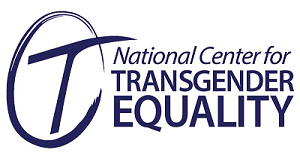Abortion rights, women of color, and LGBTQIA+ people are under attack. Pledge to join us in fighting for gender justice.

All students should have the opportunity to fully participate in school sports free from discrimination based on sex, including gender identity and transgender status. As a broad civil rights law, Title IX aims to ensure that all students can access the benefits and opportunities of an education free from sex discrimination, including in school activities, like sports. Since Title IX’s implementing regulations were first issued in 1975, Title IX has allowed, but not required, schools to have sex-separated sports teams where “selection for such teams is based on competitive skill or the activity involved in a competitive sport.” It has also required that schools provide equal opportunity in their sports programs.
Despite this broad mandate, extremists have been working hard to stop LGBTQI+ students from being their full selves in schools, including by targeting trans, nonbinary, and intersex students’ right to play sports alongside their peers. To date, 21 states have passed laws that categorically ban trans student athletes from participating on the team that aligns with their gender identity.
In April 2023, after years of sustained advocacy, the Department of Education proposed a new rule affirming that Title IX secures the right of transgender, non-binary, and intersex students to play school sports free from discriminatory rules that seek to ban them. This is the first time that the Title IX rules would address trans students’ eligibility to participate on sex-separated athletic teams.
We recognize that many trans, nonbinary, and intersex student athletes and their families are feeling worried about the real-world implementation of this rule, given the intense bullying and fear mongering they have faced at the state and local levels in the past few years. Properly interpreted and applied, this rule would sharply restrict schools’ ability to exclude trans, nonbinary, and intersex athletes.
The following is the full text of the proposed rule: If a recipient adopts or applies sex-related criteria that would limit or deny a student’s eligibility to participate on a male or female team consistent with their gender identity, such criteria must, for each sport, level of competition, and grade or education level: (i) be substantially related to the achievement of an important educational objective, and (ii) minimize harms to students whose opportunity to participate on a male or female team consistent with their gender identity would be limited or denied.
Below is a summary of the proposed rule and the way the Biden administration says it should be interpreted.
What would the proposed Title IX athletics rule do?
- Prohibit schools from categorically banning trans students from participating in sports consistent with their gender identity.
- This means that the 21 states with blanket bans that prohibit trans students from playing on sports consistent with their gender identity would be in violation of Title IX.
- Effectively prohibit elementary schools, middle schools, and in most cases, high schools from adopting rules that prevent trans students from participating in school sports consistent with their gender identity.
- Provide that a school can only limit or deny a student’s eligibility to participate on a school sports team consistent with their gender identity in rare circumstances. Specifically, for each sport, level of competition, and grade or education level, any such restriction must:
- be substantially related to an important educational objective, and
- minimize harm to any student whose opportunity to participate on a team consistent with their gender identity is limited or denied.
- Prohibit schools from relying on justifications that do not reflect important educational objectives and that are transphobic:
- Schools could not justify an exclusion of trans students from playing sports based on disapproval of trans students, a desire to harm a particular student, a desire to exclude trans students from sports, adherence to sex stereotypes, or for administrative convenience.
- Schools could also not justify an exclusion of trans students based on overbroad generalizations or false assumptions, such as restrictions that assume categorical superiority or physical advantages for trans athletes across all sports. For example, schools would not be able to assume that trans women and girls have the same physical abilities as cisgender boys and men.
- Require schools to evaluate the harm that any restriction would have on an affected student. If there is any less harmful alternative, the school would not be permitted to adopt the more harmful criteria. For example, if a school requires a student to provide documentation of their gender identity, it would need to minimize the potential harm to the student and consider the difficulty in obtaining documentation for that student, or the risk of invasion of privacy or disclosure of confidential information.
In sum, interpreted properly, the proposed rule would sharply restrict schools’ ability to exclude trans, nonbinary, and intersex athletes.
Where does the standard in the proposed Title IX rule come from?
- The proposed test is similar to the analysis for determining whether state laws and public school rules that treat people differently based on sex (i.e., “sex-based classifications”) violate the Equal Protection Clause of the U.S. Constitution. This constitutional analysis presumes that sex-based classifications are unlawful unless the government actor relying on these classifications can prove they meet a stringent test: that they serve important governmental objectives and are substantially related to achievement of those objectives. In lawsuits challenging state sports bans, courts have applied this test in determining whether such bans are unconstitutional.
- This is consistent with the standard the Department already applies for K-12 schools that have single-sex classes or other extracurricular activities.
What does the proposed Title IX rule not do?
- It does not immediately go into effect: this is a proposed rule that the public will be able to weigh in on during the 30-day comment period (until May 15, 2023), and it is possible the Department will make changes and revisions to the text before finalizing it. This means that, especially with anti-trans bans active in 21 states, it is very important to continue fighting against proposed state and local policies that would bully and exclude LGBTQI+ youth in education and other areas of life.
- It does not require that schools limit trans students’ participation in athletics in any way: the 15 states (including DC) that currently allow trans students to participate in K-12 sports consistent with gender identity would be in compliance with the Title IX athletics rule as proposed.
It should go without saying, policies that fully include trans women and girls on sports team with other women and girls harm no one. Women’s rights and gender justice organizations overwhelmingly support inclusion of trans women and girls in sports, and reject sports bans for dangerously targeting trans women and girls and relying on sex-based stereotypes and inaccuracies to justify bans. Policies that fully include trans women and girls on sports teams with other women and girls harm no one, and sports bans limiting or denying their participation in sports do nothing to address the very serious problems that do exist in women and girls’ sports, such as fewer opportunities to play, second-class resources, and pervasive sexual abuse of student athletes by doctors and coaches.








